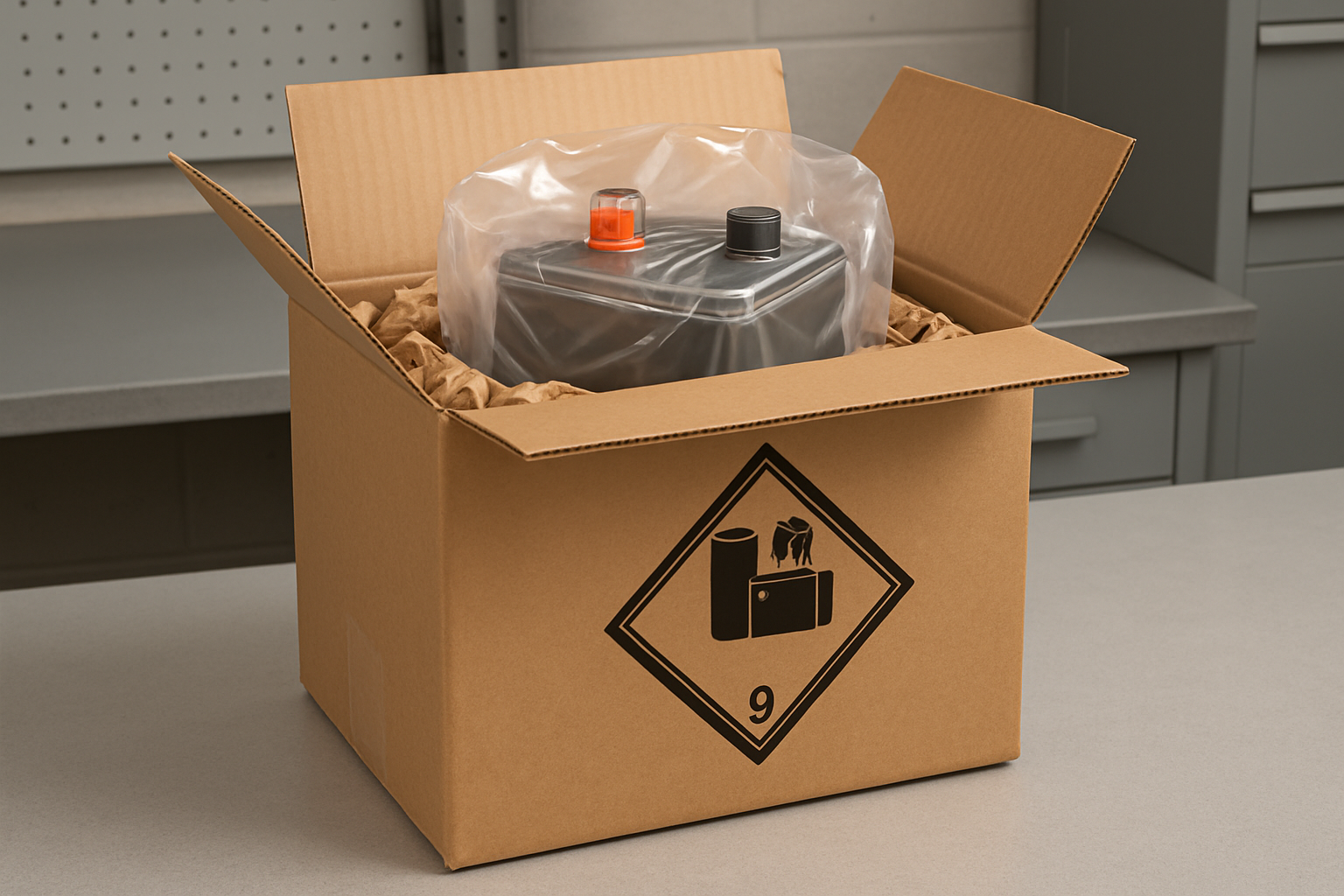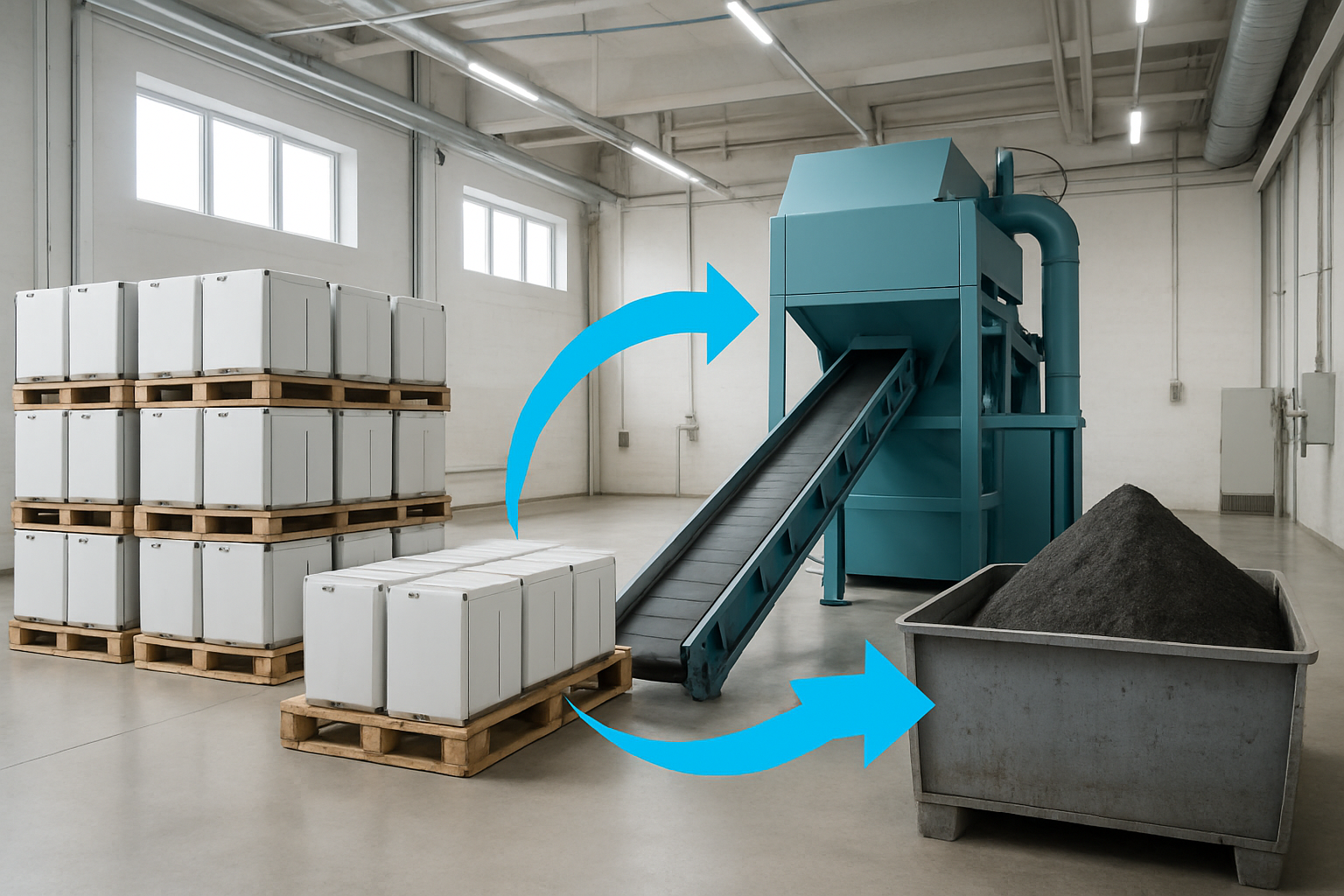As energy storage systems (ESS) become more common in homes and businesses, a critical question emerges: what happens to the batteries at the end of their initial service life? The decision is not simply about disposal. It's a choice between giving the battery a second life or recovering its valuable components. This practical checklist provides a framework for making an informed decision between reuse and recycling, helping you maximize both economic and environmental value.
The End-of-Life Landscape for ESS Batteries
The number of batteries reaching the end of their service life is set to increase dramatically. This presents a significant waste management challenge but also a substantial opportunity. Making the right choice is crucial for building a sustainable energy future.
A Growing Wave of Spent Batteries
The rapid growth of electric vehicles and energy storage is creating a large future volume of used batteries. According to a report by the International Energy Agency, this influx will pose serious waste management challenges if not handled correctly. As noted in The Role of Critical Minerals in Clean Energy Transitions, a significant increase in spent batteries is expected to enter the market starting around 2030. Proper planning is necessary to turn this potential waste stream into a valuable resource.
Reuse vs. Recycle: The Core Concepts
Understanding the two primary pathways is the first step. Reuse involves repurposing a battery for a less demanding, or 'second-life,' application. For example, a battery that no longer meets the rigorous demands of an electric vehicle might be perfectly suited for a residential ESS. Recycling is the process of breaking down a battery to its fundamental materials. This allows for the recovery of critical minerals like lithium, cobalt, and nickel, which can then be used to manufacture new batteries.
The Decision Checklist: Key Evaluation Criteria
The choice between reuse and recycling depends on a careful evaluation of technical, economic, and market factors. This checklist breaks down the essential criteria to guide your decision-making process.

State of Health (SoH) and Remaining Capacity
The battery's technical condition is the most critical factor. State of Health (SoH) is a measurement of a battery's ability to store and deliver energy relative to its original capacity. Generally, batteries with an SoH between 70% and 80% are strong candidates for reuse. The IEA states that spent batteries often retain up to 80% of their total usable capacity, making them ideal for second-life applications. Below this threshold, the performance may be insufficient for reliable operation, making recycling the more practical option. Accurate data from the Battery Management System (BMS) is vital for this assessment.
Economic Viability Analysis
A cost-benefit analysis is essential. You must weigh the costs associated with each pathway against the potential returns. Reusing a battery incurs costs for testing, recertification, and integration into a new system. Recycling costs involve transportation and processing fees. The revenue from recycling depends on fluctuating commodity prices for recovered materials.
| Factor | Reuse (Second-Life) | Recycling |
|---|---|---|
| Initial Costs | Testing, recertification, disassembly, labor | Transportation, processing fees |
| Potential Revenue | Sale of the second-life system, energy cost savings | Sale of recovered raw materials (lithium, cobalt, nickel) |
| Key Variables | Market demand for second-life ESS, system integration complexity | Commodity market prices, recycling process efficiency |
Market and Application Demand
The viability of reuse depends heavily on the existence of a market for second-life systems. These applications can include residential energy storage, peak shaving for commercial buildings, or providing power to off-grid installations. If a clear and profitable second-life market exists, reuse is often an attractive path. Conversely, strong demand for raw materials from new battery manufacturing can make recycling more economically compelling.
The Reuse Pathway: From Assessment to Redeployment
If a battery meets the criteria for a second life, a structured process ensures it can be redeployed safely and effectively.
Technical Assessment and Safety
A thorough assessment is non-negotiable. This process includes a visual inspection for any physical damage, followed by comprehensive electrical testing to verify its actual capacity and internal resistance. Safety is paramount. Professionals must conduct these tests to mitigate risks such as thermal runaway. Only batteries that pass these rigorous checks should be considered for redeployment.
Second-Life Applications in Practice
Repurposing used batteries can generate significant value. As the IEA points out, using these batteries can help lower the cost of EV charging stations and residential energy storage. This not only extends the useful life of the battery but also reduces the immediate need for newly mined materials, contributing to a more circular economy.
The Recycling Pathway: Recovering Valuable Materials
When reuse is not feasible, recycling provides an environmentally responsible solution that supports the battery supply chain.
The Recycling Process
Modern recycling processes, such as hydrometallurgy and direct recycling, are designed to recover high percentages of critical minerals. These materials are separated and refined into battery-grade inputs, ready to be used in the production of new cells. This closes the loop, turning potential waste into a valuable resource.
Impact on Global Supply Chains
Recycling is fundamental to creating a resilient and sustainable supply chain. By recovering valuable minerals, recycling reduces the reliance on primary mining. The IEA's analysis in The Role of Critical Minerals in Clean Energy Transitions highlights that recycling can relieve a portion of the burden from mining virgin ores. This is increasingly important as regulations, such as the EU's Sustainable Batteries Regulation, begin to mandate minimum levels of recycled content in new batteries, further driving the circular economy.
Making the Right Choice for a Sustainable Future
The decision to reuse or recycle an ESS battery is not a simple one. It requires a balanced assessment of the battery's health, the economic costs and benefits, and current market dynamics. By using a structured checklist, you can navigate this complex decision effectively. A thoughtful end-of-life strategy ensures you extract the maximum value from your asset while contributing positively to a circular and sustainable energy ecosystem.
Disclaimer: This information is for educational purposes only and does not constitute financial or legal advice. Consult with certified professionals for specific guidance on battery disposal and recycling in your region.
Frequently Asked Questions
What is the typical State of Health (SoH) for a battery to be considered for reuse?
A battery is generally considered a good candidate for second-life applications if its State of Health (SoH) is between 70% and 80%. In this range, it may no longer meet the demands of its primary application (like an electric vehicle) but still has substantial capacity for less intensive uses, such as residential energy storage.
Is it more profitable to reuse or recycle an ESS battery?
Profitability depends on several factors. Reuse can be more profitable if there is strong market demand for second-life systems and if the costs of testing and recertification are low. Recycling's profitability is tied directly to the market prices of recovered minerals like lithium and cobalt, which can be volatile. A detailed economic analysis is needed to determine the best financial option in a specific situation.
Who is responsible for the end-of-life decision for an ESS?
The responsibility typically lies with the system owner. However, manufacturers, installers, and specialized waste management companies often provide guidance and take-back programs. It is important to consult your system's documentation and local regulations to understand your specific responsibilities.
How do regulations influence the reuse vs. recycle decision?
Regulations play a significant role. For instance, initiatives like the EU's Sustainable Batteries Regulation, mentioned in the IEA's report on critical minerals, are creating stricter rules for the entire battery lifecycle. These regulations may mandate collection targets, require minimum levels of recycled content in new batteries, and establish 'battery passports' to track a battery's history, all of which encourage both reuse and high-efficiency recycling.





Leave a comment
All comments are moderated before being published.
This site is protected by hCaptcha and the hCaptcha Privacy Policy and Terms of Service apply.